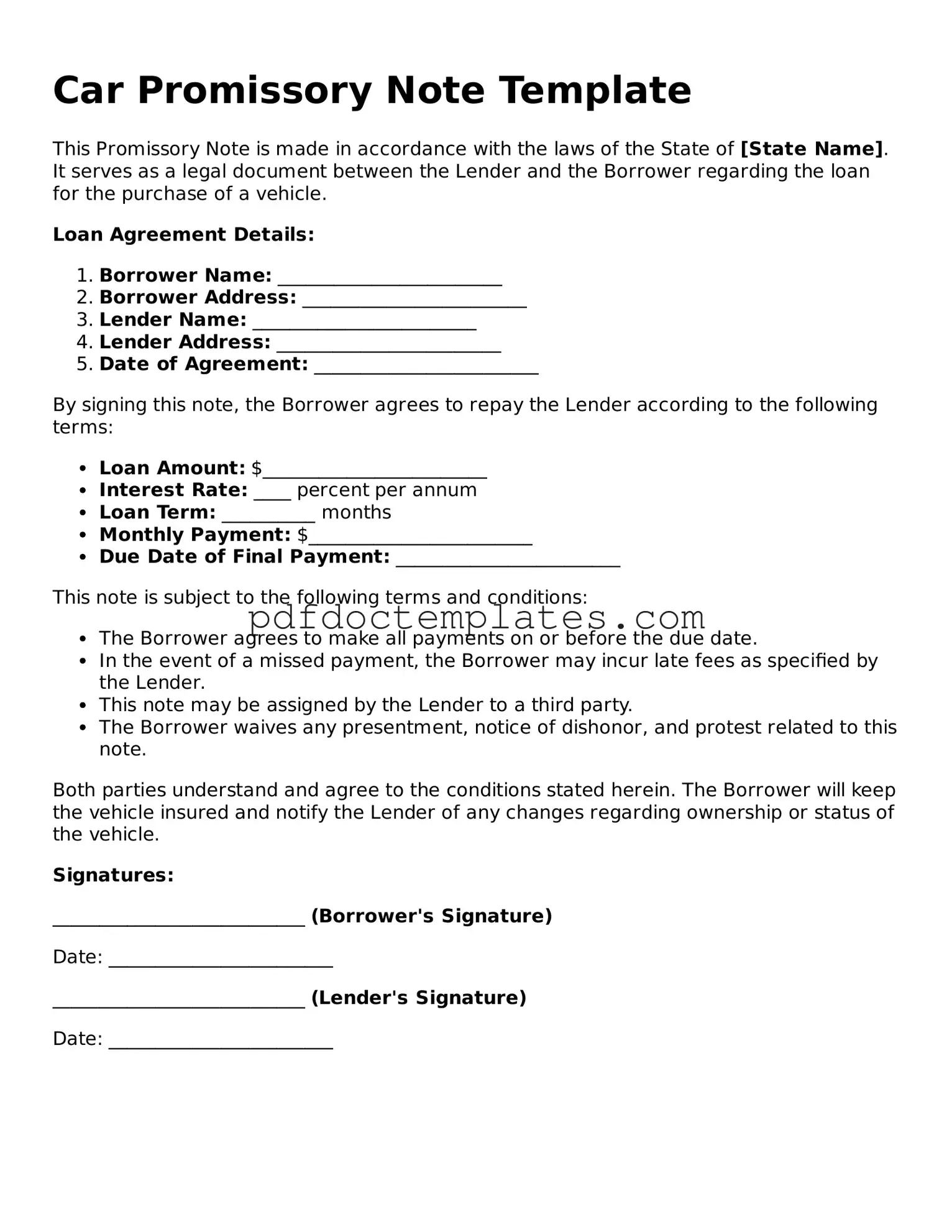Car Promissory Note Template
This Promissory Note is made in accordance with the laws of the State of [State Name]. It serves as a legal document between the Lender and the Borrower regarding the loan for the purchase of a vehicle.
Loan Agreement Details:
- Borrower Name: ________________________
- Borrower Address: ________________________
- Lender Name: ________________________
- Lender Address: ________________________
- Date of Agreement: ________________________
By signing this note, the Borrower agrees to repay the Lender according to the following terms:
- Loan Amount: $________________________
- Interest Rate: ____ percent per annum
- Loan Term: __________ months
- Monthly Payment: $________________________
- Due Date of Final Payment: ________________________
This note is subject to the following terms and conditions:
- The Borrower agrees to make all payments on or before the due date.
- In the event of a missed payment, the Borrower may incur late fees as specified by the Lender.
- This note may be assigned by the Lender to a third party.
- The Borrower waives any presentment, notice of dishonor, and protest related to this note.
Both parties understand and agree to the conditions stated herein. The Borrower will keep the vehicle insured and notify the Lender of any changes regarding ownership or status of the vehicle.
Signatures:
___________________________ (Borrower's Signature)
Date: ________________________
___________________________ (Lender's Signature)
Date: ________________________
